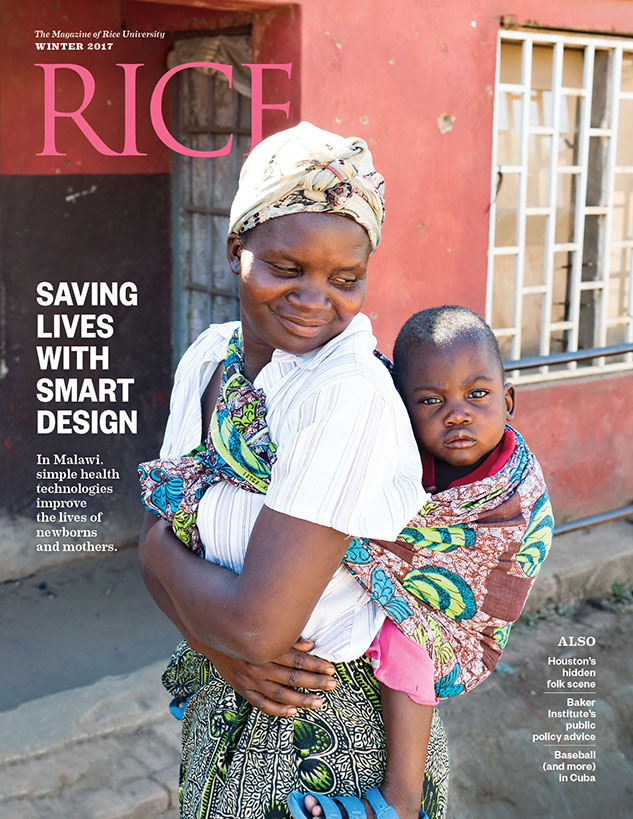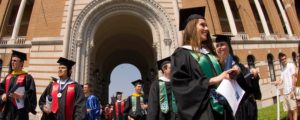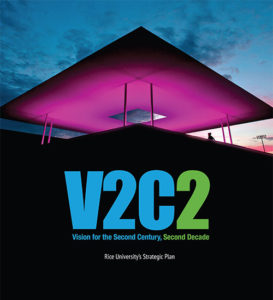Findings, Research and More
THE ROSS ICE SHELF’S HISTORIC LESSONS

Photo courtesy of Lauren Simkins
- The Ross Ice Shelf, almost as large as France, is the world’s largest ice shelf.
- Scientists, including Rice oceanographer John Anderson, believe the ice shelf broke apart about 5,000 years ago.
- How ice sheets and shelves responded to historic atmospheric and ocean warming informs scientists about present-day conditions.
In a new study that provides clues about how Antarctica’s Ross Ice Shelf might respond to a warming climate, U.S. and Japanese oceanographers detailed the breakup of a 100,000-square-mile section of the shelf a§er the last ice age. A recent study in Proceedings of the National Academy of Sciences proposed that the ice sheet retreated from the Ross Sea and was replaced by a floating ice shelf that broke apart during the Bronze Age. The paper was co-authored by Rice oceanographer John Anderson, postdoctoral research associate Lauren Simkins, graduate student Lindsay Prothro and their colleagues at the University of Tokyo.
In western Antarctica, the Ross Sea is characterized by a continental shelf that extends nearly 1,000 miles from the coast to depths of roughly 3,500 feet. Anderson said the geologic record reveals that a floating ice shelf formed in the sea as the grounded ice sheet retreated. Sophisticated carbon dating of seafloor sediments showed that the ice shelf later broke apart, in dramatic fashion. “The really big breakup began around 3,000 B.C.,” Anderson said. “We believe it was similar, in many respects, to the breakup of the Larsen B Ice Shelf in 2002. The Larsen is far smaller than the Ross Ice Shelf, but satellite imagery that year showed the Larsen dramatically breaking apart in just a few weeks. We believe the large breakup of the Ross Ice Shelf occurred at roughly this same pace, but the area involved was so much larger — about the size of the state of Colorado — that it took several centuries to complete.” Video
— Jade Boyd
A TOXIC COUPLE

- Depression and inflammation feed on one another, with many negative health consequences.
- When inflammation co-occurs with depression, treating the two in tandem can improve the chances of recovery.
Chronic inflammation in the bloodstream can “fan the flames” of depression, much like throwing gasoline on a fire, according to research published in the American Journal of Psychiatry. The study, from researchers at Rice and Ohio State University, reviewed 200 existing papers on depression and inflammation.
“In the health area of psychology at Rice, we’re very focused on the intersection of health, behavior, psychology and medicine,” said Christopher Fagundes, an assistant professor of psychology and co-author of the paper. “One thing that we’re particularly interested in is how stress affects the immune system, which in turn affects diseases and mental health outcomes, the focus of this paper.”
The authors found that in addition to being linked to numerous physical health issues, including cardiovascular disease, diabetes and metabolic syndrome, systemic inammation is linked to mental health issues such as depression. Among patients suffering from clinical depression, concentrations of two inflammatory markers, CRP and IL-6, were elevated by up to 50 percent.
Researchers are finding that systemic inflammation is “the root of all physical and mental diseases,” Fagundes said. “Stress, as well as poor diet and bad health behaviors, enhances inflammation.”The review also found that depression caused by chronic inflammation is resistant to traditional therapy methods, but can be treated with activities such as yoga, meditation, diet, NSAIDS (nonsteroidal anti-inflammatory drugs) and exercise. Video
— Amy McCaig
FOTOFEST AT RICE
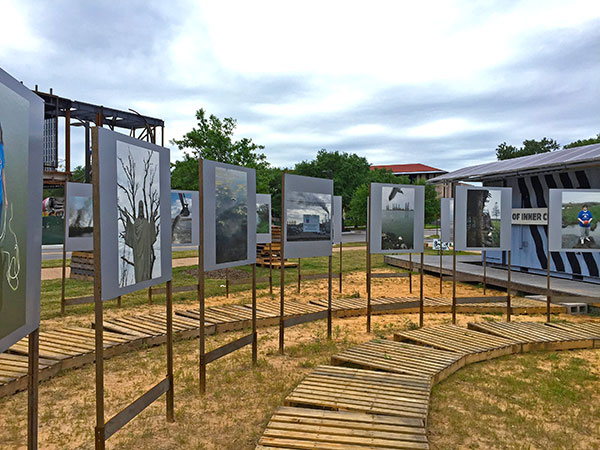
- Rice hosted five FotoFest exhibitions this year.
- Two exhibitions were sponsored by the Rice Center for Energy and Environmental Research in the Human Sciences.
- These photos were displayed in three solar-powered containers near the Moody Center for the Arts site.
By hosting five exhibitions this year, Rice has become an integral part of Houston’s FotoFest, a citywide exhibition of photography and mixed media arts. The 2016 biennial explored the theme “Changing Circumstances: Looking at the Future of the Planet.”
Two of the exhibitions, in particular, were made possible by an energetic partnership of students, faculty and alumni. “Another Storm Is Coming” featured photographs and video by artist Judy Natal, while “Dear Climate” included the work of four artists: Marina Zurkow, Una Chaudhuri, Fritz Ertland Oliver Kellhammer.
These exhibitions were displayed in and around three reconfigured solar-powered containers on a patch of land between Tudor Fieldhouse and the Moody Center for the Arts construction site. Rice Building Workshop students built ramps, mounted artwork and created signs for the temporary art galleries, which were donated by alumnus Joe Meppelink ’00 of MetaLab and Joey Romano, the president of Mobile Grid. Both exhibitions were commissioned by Rice’s Center for Energy and Environmental Research in the Human Sciences.
— Jeff Falk
POWERFUL MAGNET WILL LESSEN PAIN
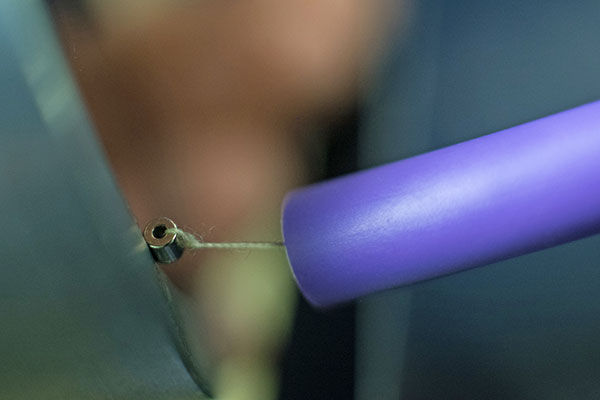
- Engineering students developed a less invasive ureteral stent removal system.
- Their design team, Rice Outstenting, worked with Texas Children’s Hospital.
- The device has won several prizes, which will lead to further development.
A simple device created by engineering students may shield young children from much of the pain of having a stent removed after a urinary tract procedure. Their invention, the Ureteral Stent Electromagnetic Removal Bead, is part of a stent inserted into the ureter, the duct that allows urine to pass from the kidney to the bladder. The stent keeps the passageway open after a pyeloplasty procedure to remove an obstruction.
Removing the stent after four weeks of healing typically involves inserting an endoscope into the urethra and bladder to locate the stent and pull it, an invasive procedure for which children are placed under anesthesia. The students were asked by Chester Koh, M.D., at Texas Children’s Hospital to find a way to simplify this procedure, which is currently performed on more than 2,000 pediatric patients nationwide each year. They came up with the combination of a small, coated bead of highly magnetic neodymium and a powerful electromagnet.
The bead can pass safely through the urethra as the magnet pulls it out of the body, followed by the stent. The advantages are clear: There’s less pain and it costs two-thirds less than the standard procedure because it doesn’t require anesthesia and can be completed in minutes rather than hours. Video
— Mike Williams
A HAND FOR HAND-MAKERS
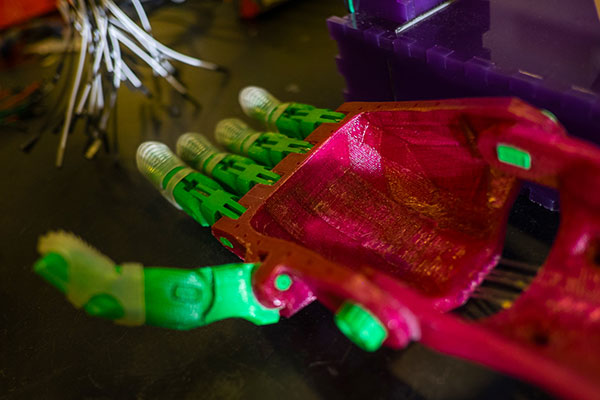
Photo by Jeff Fitlow
- Senior engineering students developed a way to test the strength of 3-D printed prosthetics.
- Such prosthetics can be made more efficient, especially for use by children.
The Rice student engineering team calling itself Carpal Diem has developed a testing system to validate how well 3-D printed hands allow the wearer, typically a child born without a fully formed hand, to pick up and manipulate small objects.
The team’s device consists of a motorized wrist-and-palm assembly that can move up to 60 degrees in either direction, a set of objects (a cylinder, a sphere and a rectangular prism) with embedded force sensors and a control program with a graphic user interface. Sensors in the object send feedback on force strength and distribution to a computer.
“If a kid has to put in five pounds of force to only get one pound of grip, that’s a lot of lost efficiency because of how these hands are designed,” said Rachel Sterling, one of the engineers. “Until we reach a force efficiency of 100 percent, the hands aren’t going to be useful.”
Sterling, along with bioengineering majors Nicolee Chamberlain-Simon and Michaela Dimoff, electrical and computer engineering major Nirali Desai and mechanical engineering major Amber Wang began strategizing even before they returned to Rice for their senior year. They hope to put the first prototype of the testing device and a detailed protocol for its use into the hands of their mentor, Gloria Gogola, a pediatric hand surgeon at Shriners Hospital for Children-Houston. Video
— Mike Williams
SAFER SURGERY IN A BOX
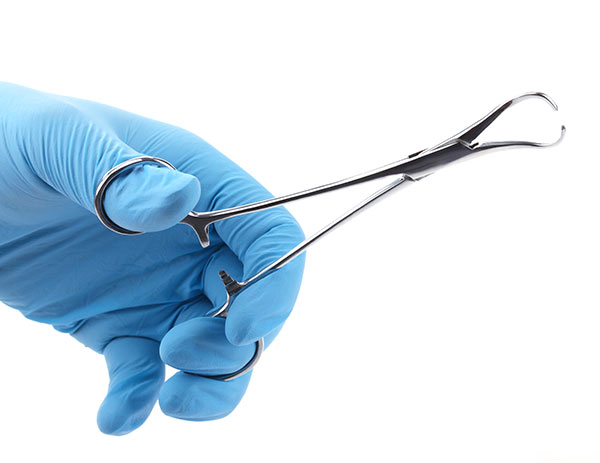
- One-third of surgery patients in developing countries develop infections.
- Few surgeons in these settings have access to an autoclave used to sterilize instruments.
- The Sterile Box uses sunlight to power an autoclave anywhere in the world.
It looks like — and is — a standard shipping container, but it can help minimize the risk of infection for patients undergoing surgery anywhere in the world. Douglas Schuler, associate professor of business and public policy in Rice’s Jones Graduate School of Business, mentored the team of students who designed the box, which houses all the equipment necessary to safely prepare surgical instruments, including a water system for decontamination and a solar-powered autoclave for steam sterilization.
In an article published in the open-access journal PLoS ONE, the team noted that about one-third of patients in low-resource settings suffer surgical-site infections — a number nine times higher than in developed countries. These infections are frequently the result of reusing medical instruments that carry traces of microorganisms or biological material from previous patients.
Schuler and his students have been working to sterilize instruments with sunlight for years. Their first design used a mobile A-frame solar-thermal device that focused sunlight to heat a stand-alone autoclave. But the team decided to design a more comprehensive platform in which instruments could be processed day and night. They added solar panels and electrical storage to the container, as well as water distribution from two tanks, one on the ground that has a hand pump to move water to a 50-gallon tank on the roof.
“We tried to really think hard about social context,” Schuler said. “We laid out the elements to minimize human error and water and energy requirements to the extent that we can.”
The next step will be to test the Sterile Box in a clinical setting. Schuler is working with the Baylor College of Medicine to incorporate the box into the planned 2017 deployment, in Malawi, of its Smart Pod, a mobile surgical suite also to be housed in a modified shipping container. Video
— Mike Williams
A NEW TWIST ON AN OLD DRINK
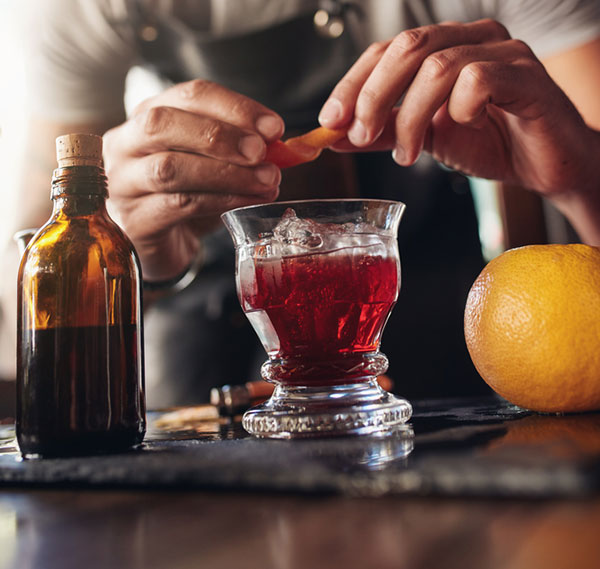
- Shrubs, or drinkable vinegars, are an age-old way to preserve fruit.
- Fruit mixed with sugar ferments into alcohol, then becomes vinegar.
- The trick is maintaining the right bacteria levels; too much alcohol early in the process kills off the bacteria and halts fermentation.
Chris Shepherd, the James Beard award-winning chef who owns the Houston restaurant Underbelly, partnered with Rice students studying practical chemistry and microbiology to help his restaurant refine its approach to turning what would otherwise be wasted produce into a fermented mixer that gives drinks a flavorful kick: drinking vinegars called shrubs.
“We buy as much (local produce) as we possibly can, but to do that we have to be able to use it in different ways,” Shepherd said. The chef and Rice lecturers Sandra Bishnoi and Michelle Gilbertson put students to work on the problem over the spring semester. Their task was to quantify chemical processes and identify the microbes present in the production of vinegars and, in turn, shrubs, from produce that can’t be used fresh.
The restaurant was already monitoring acid levels during fermentation based on previous work with Lesa Tran, the Wiess Instructor of Chemistry and a self-professed foodie who got Shepherd involved in a chemistry of cooking class in 2014. The tricky part that remained was to quantify what happens as produce ferments first into alcohol, then into vinegar, Bishnoi said.
The freshmen were grateful for the chance to work on a project with a real-world application. “It might not have been as beneficial for Chef Chris as we luckily had it turn out to be,” Gilbertson said. “Of course, there was a problem to solve in the first place. That’s why they came to us. If the process had been going swimmingly, there would have been no reason for us to look at it.” Video
— Mike Williams
ZIKA THREAT

- Zika will affect an estimated 3 to 4 million people in the Americas in 2016.
- One in five carriers will develop mild symptoms.
- It is classified as a neglected tropical disease.
The Zika virus has become widespread in the United States, Mexico and the rest of the Americas and requires investments in research and treatment, according to tropical disease experts at Rice’s Baker Institute. The latest outbreak, which began in Brazil in 2015, has spread to 26 countries, including the U.S. Classified as a neglected tropical disease (NTD), Zika is spread mostly through mosquitoes, much like dengue fever and the West Nile virus. While the virus may produce mild symptoms, recent news accounts of Guillain-Barré syndrome and microcephaly, which may be associated with Zika, illustrate the urgency of treatment and prevention.
These outbreaks are a reminder that “global health and NTDs can affect local health,” wrote Jennifer Herricks, a postdoctoral fellow in disease and poverty at both the Baker Institute and Baylor College of Medicine’s National School of Tropical Medicine, and Kirstin Matthews, a fellow in science and technology policy, in a recent public policy brief.
COLLEGE SAVINGS
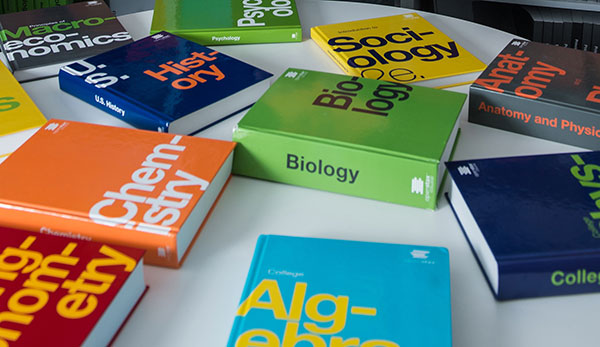
Free textbooks from Rice-based publisher OpenStax saved college students $39 million in 2015-2016
- OpenStax, a Rice-founded nonprofit publisher, produces free college textbooks.
- In 2015, OpenStax textbook adoptions more than doubled.
Free textbooks from Rice-based publisher OpenStax are now in use at one in five degree-granting U.S. colleges and universities and have saved college students $39 million in the 2015–16 academic year, according to Richard Baraniuk, founder and director of OpenStax and Rice’s Victor E. Cameron Professor of Engineering.
“The number of instructors adopting our textbooks increased by more than 100 percent in 2015, and OpenStax college books are in use in 2,500 courses this academic year,” Baraniuk said. “Those numbers speak volumes about the demand for affordable, high-quality textbooks, and they confirm what we’ve long known: Scalability is the key to changing textbook economics.”
OpenStax uses philanthropic grants to produce peer-reviewed textbooks that are free online and low-cost in print. It launched in 2012 with the goal of publishing free textbooks for the nation’s 25 most-attended college courses and is on track to meet its goal of saving students $500 million by 2020.
—Jade Boyd
FACULTY BOOKS — RECENT PUBLICATIONS
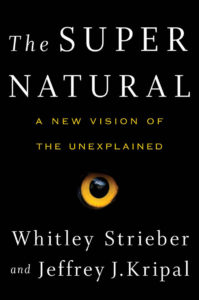 The Super Natural: A New Vision of the Unexplained
The Super Natural: A New Vision of the Unexplained
by Whitley Strieber and Jeffrey J. Kripal (Tarcher Perigee, 2016)
STRIEBER’S 1987 BESTSELLER “COMMUNION” MADE HIM “THE POSTER BOY FOR ALIEN ABDUCTION,” ACCORDING TO TEXAS MONTHLY. It also started a conversation on unexplained experiences that he continues here with co-author Jeffrey Kripal, the J. Newton Rayzor Professor of Religion at Rice. That conversation is not without controversy, as Kripal acknowledges in an opening chapter that calls the book “an apocalypse of thought.” Rather than attempting to prove the reality of alien encounters, “The Super Natural” endeavors instead to explore and understand those phenomena that occupy the extreme margins of human experience — what Kripal calls “the wild, fantastic stuff that shouts, glows and zaps.”
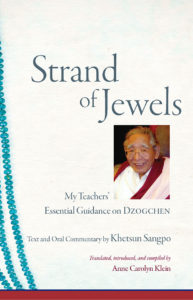 Strand of Jewels: My Teachers’ Essential Guidance on Dzogchen
Strand of Jewels: My Teachers’ Essential Guidance on Dzogchen
by Khetsun Sangpo; translated by Anne C. Klein (Snow Lion, 2016)
Khetsun Sangpo, a renowned scholar of the oldest school of Tibetan Buddhism, refused for decades to discuss Dzogchen — the path to primordial awakening that is one of the school’s central teachings — with anyone who hadn’t already completed the “foundational practices,” according to Klein, a Rice religion professor who is herself a Buddhist lama. But his desire to make Buddhism more inclusive won out, and ultimately he authorized Klein to translate this text from the Tibetan, along with his oral commentary on the teachings. The book is unique for its deep interweaving of the poetic, effortless character of traditional Dzogchen with scholarship that anchors it in a wide array of seminal texts from across the Indian and Tibetan traditions. Although Khetsun Sangpo died in 2009, many of his insights live on in this book, which, Klein explains in her introduction, is “meant to inspire and nourish lifelong practice.”
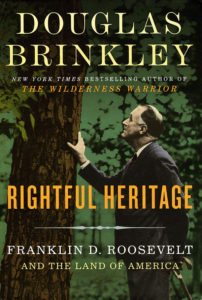 Rightful Heritage: Franklin D. Roosevelt and the Land of America
Rightful Heritage: Franklin D. Roosevelt and the Land of America
by Douglas Brinkley (Harper, 2016)
The historical record on Franklin D. Roosevelt is mixed. He’s remembered both as the New Deal reformer who helped pull the United States out of the Great Depression and, less fondly, as the wartime president who interned more than 100,000 Japanese-Americans following Japan’s attack on Pearl Harbor. In his new book, Rice History Professor Douglas Brinkley makes a case for adding another accomplishment to the plus column by recognizing Roosevelt’s unsung role as a great conservationist. Under FDR’s watch, Brinkley said, 3 billion trees were planted and crucial landscapes were saved, from the Okefenokee Swamp to the Olympic Mountains, making him the most preservation-minded of all the presidents but one — his distant relative, Theodore Roosevelt. Brinkley is well aware of the comparison; he published a biography of Teddy Roosevelt, “The Wilderness Warrior,” in 2009.
— book reviews by Jennifer Latson



